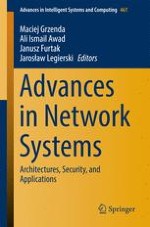This book provides the reader with a comprehensive selection of cutting–edge algorithms, technologies, and applications. The volume offers new insights into a range of fundamentally important topics in network architectures, network security, and network applications. It serves as a reference for researchers and practitioners by featuring research contributions exemplifying research done in the field of network systems. In addition, the book highlights several key topics in both theoretical and practical aspects of networking. These include wireless sensor networks, performance of TCP connections in mobile networks, photonic data transport networks, security policies, credentials management, data encryption for network transmission, risk management, live TV services, and multicore energy harvesting in distributed systems.
